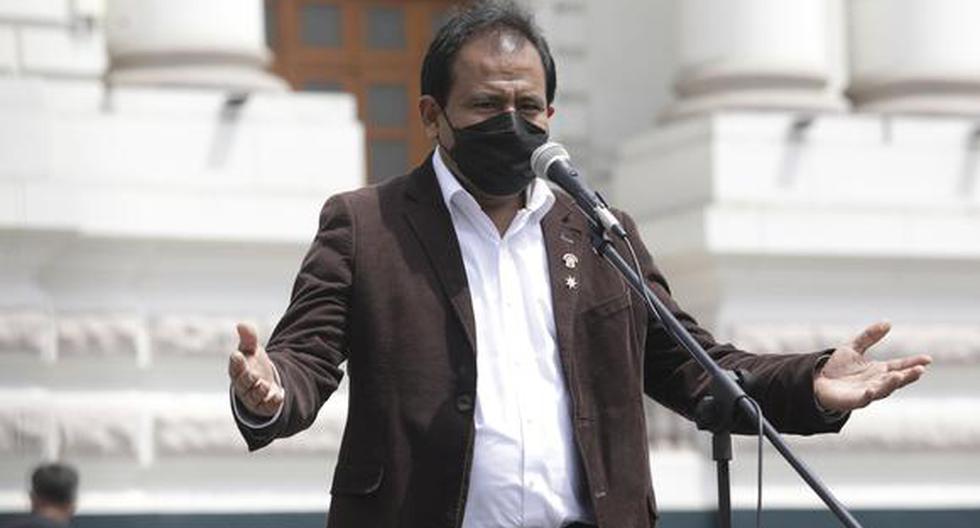Although since the appearance of the first cases outside Africa at the beginning of May, the information revealed a mild infection, which was not more serious, but the confirmation of five deaths outside that continent, where the disease is endemic, It sounded alarm bells around the world.
The latest available data shows 19,691 confirmed cases worldwide, in 73 countries. And now, monkeypox is adding its first deaths in Europe, Asia and America.
It is that in the last two days, Spain reported two deaths and Brazil one, in addition to another five that had already been recently reported in Africa, where the disease is endemic, and was first detected in humans in 1970.
Peru and India were added to the list, which last Monday reported their first deaths from the disease.
Information on deaths from monkeypox
Indian health authorities confirmed on Monday the first death of a patient infected with monkeypox in the south of the country, where four cases of this disease have been detected so far.
This is a 22-year-old man, resident in the southern state of Kerala and with a recent travel history to the United Arab Emirates, who died last Saturday.
Meanwhile in Spain, the first death was confirmed last Friday, a man resident in the Valencian Community, as a result of encephalitis. The second, also a man, due to meningoencephalitis, a mixed picture of meningitis and encephalitis. Whether monkeypox is behind this disease is being studied.
Finally, in Brazil so far there has been one death from the monkey virus, as has Peru.
Situation of Paraguay regarding monkeypox
Dr. Guillermo Sequera said that there are high suspicions that Paraguay already has positive cases of monkeypox.
“Now we have no suspected cases. I am concerned about this and it is a communication challenge. I have high suspicions that there is already a case and we have to find it, ”said the head of Health Surveillance.
Epidemiological alert in Paraguay
From the Directorate of Surveillance and Response to Health Emergencies, dependent on the General Directorate of Health Surveillance, the epidemiological situation of monkeypox-Monkeypox cases in the world has been monitored since the beginning of May 2022, taking into account the appearance of the first confirmed cases in non-endemic countries for this disease.
In addition, the investigation of notifications entered into the surveillance system is carried out, as well as the preparation of technical documents, alerts and risk assessment to promote immediate actions to capture cases and coordinate the response in a timely manner to this health event. public.
On May 23, 2022, an Epidemiological Alert was issued in Paraguay regarding surveillance guidelines, case definition, laboratory. Enter the link to see information on the Epidemiological Alert.
How serious is monkeypox?
Experts agree that, in general, it is a mild disease. The symptoms disappear on their own and the bedside treatment is “supportive”, that is, palliative support measures are provided according to the condition that the patient is suffering from.
In fact, of the 4,298 cases detected in Spain – the country most affected by the current outbreak – only 120 (2.8%) required hospital care, usually to manage the pain and infections caused by the pustules.
In the vast majority of cases, the picture does not go beyond that, but it can be complicated in people who suffer from comorbidities, in children (especially in areas with few health resources) or in those who have a weakened immune system.
What are the deaths due to?
Although so far there is little information on the deaths that have occurred in Spain, in both cases the deceased suffered from encephalitis caused by the infection. Of the first deceased, in the Valencian Community, the age was not disclosed, although it is a “young man”, according to Health of that commune. The second, from Córdoba, was 31 years old.
In the case of Brazil, it was learned that the deceased was a 41-year-old man suffering from an oncological disease.
What are the most frequent symptoms?
Monkeypox symptoms usually include fever, severe headache, muscle aches, back pain, low energy, swollen lymph nodes, and skin rashes or lesions.
According to the World Health Organization (WHO), “it is important to take care of the rash by letting it dry if possible or if necessary cover it with a moist bandage to protect the area. Avoid touching any sores in your mouth or eyes. Mouthwashes and eye drops can be used as long as cortisone-containing products are avoided.”
How is it transmitted?
Although the specific mechanism of transmission needs further study, it is known that it is produced by a very close interaction. Similar to smallpox, it has been described through large respiratory droplets during direct and prolonged face-to-face contact.
According to the US Centers for Disease Control and Prevention (CDC), monkeypox can be transmitted from person to person in different ways, such as direct physical contact with the rash caused by the infection, the “ respiratory secretions” that can be transmitted during face-to-face contact or intimate physical contact, such as sexual intercourse, and contact with items such as clothing that have touched an infectious rash or bodily fluids.
Why are there more cases among men who have sex with men?
The virus can be transmitted to anyone in direct contact with it. And although other outbreaks that over the past decades had not reached this group, this one did and it is among them where infections are growing the most. The WHO quantifies 98% of the cases detected in men who have sex with men, while the data from Spain reduces this figure to 83.3%.
Is it very contagious?
The R0 index, as the contagion rate is called (that is, the number of people that a person who contracts the disease can infect) is between 1.6 and 1.8 for monkeypox. This implies that without mitigation interventions, on average, each infected person transmits the disease to between one and a half and almost two people.
When the number is less than one, the outbreak tends to subside on its own, which is what has happened with others that have emerged in recent decades.
“It has been estimated that the communities of men who have sex with men are where it exceeds 1. That means that the outbreak is expanding and that there are opportunities to bring that reproduction number below 1 by giving those communities the correct information and empowering them,” WHO spokeswoman Maria Van Kerkhove told a news conference.
Who should be vaccinated?
There is no specific treatment or vaccine for the disease, but some countries are using smallpox immunizations for those at high risk of exposure. The applied strategy is called “ring vaccination” and consists in that, after detecting a suspected case, a strict tracing of the contacts is carried out, who are immunized.
In that sense, the CDC stated that vaccination may be recommended for people who are in close contact with someone with monkeypox, those who may have been exposed to the virus, and those who are at high risk of exposure, such as some professionals healthcare and laboratory workers.
The vaccines that are being used against monkeypox are not specific for this disease, but are designed for traditional smallpox. Although it seems that they show a high effectiveness, it is necessary to study it better.
How can it be prevented?
Beyond the vaccine, which is not available to everyone, the WHO recommends being very attentive to the symptoms described to detect the disease as soon as possible. The agency also asked that people who show signs of the disease isolate themselves so as not to spread the virus. He also advised men who have sex with men to reduce the number of their sexual partners.
Why did the WHO declare the outbreak an international health emergency?
The WHO defines a public health emergency of international concern as “an extraordinary event” that constitutes a “risk to the public health of other states through the international spread of disease” and that “may potentially require a coordinated international response” .
This definition implies a situation that is: serious, sudden, unusual or unexpected. That it has implications for public health beyond the national border of the affected State and that it may require immediate international action.
The body’s message is that the virus can be controlled with vigilance, tracing infections and breaking the chains of transmission. But this is not what is happening.
For this reason, despite the fact that the WHO advisers were not mostly in favor of declaring the emergency, its director general, Tedros Adhanom Ghebreyesus, decided to do so due to the inaction he saw in some countries to contain the infections.
Vaccination against monkeypox in the United States
The two available vaccines are: Jynneos, tested and developed to treat monkeypox infection and manufactured by Bavarian Nordic, and ACAM2000, used to treat smallpox and approved by the Food and Drug Administration (FDA). in English) against monkeypox but should not be used in people who have certain health conditions such as a weak immune system or skin conditions, the CDC explains.
As of July 27, more than 300,000 doses of this vaccine had been distributed. Among the states that have received the most doses are: New York (62,239), California (61,271), Florida (36,800) and Illinois (28,307).
It should be remembered that days ago the World Health Organization (WHO) declared a health emergency due to monkeypox and temporary recommendations were issued.
However, the threat to the public is not considered high. Currently, the focus is on identifying possible cases and coordinating an international response to contain the outbreak as soon as possible.
With information from EFE, CNN in Spanish and Infobae.





